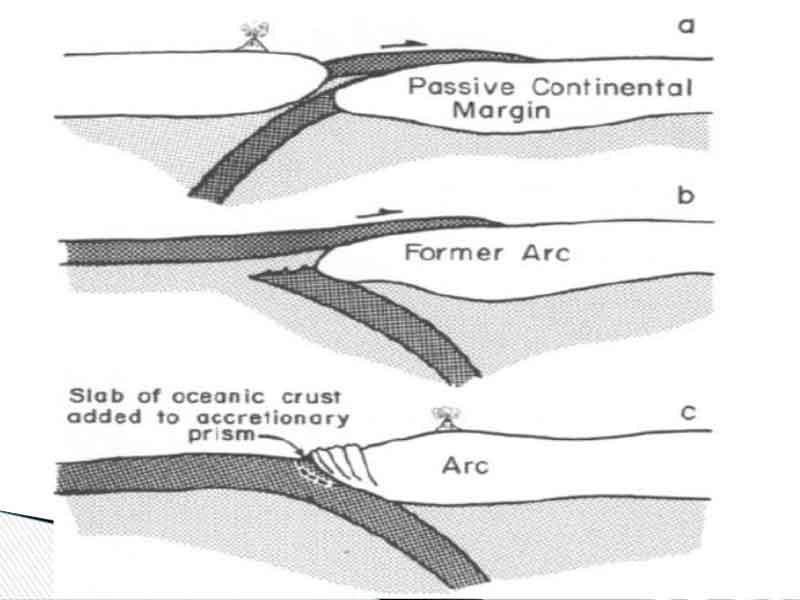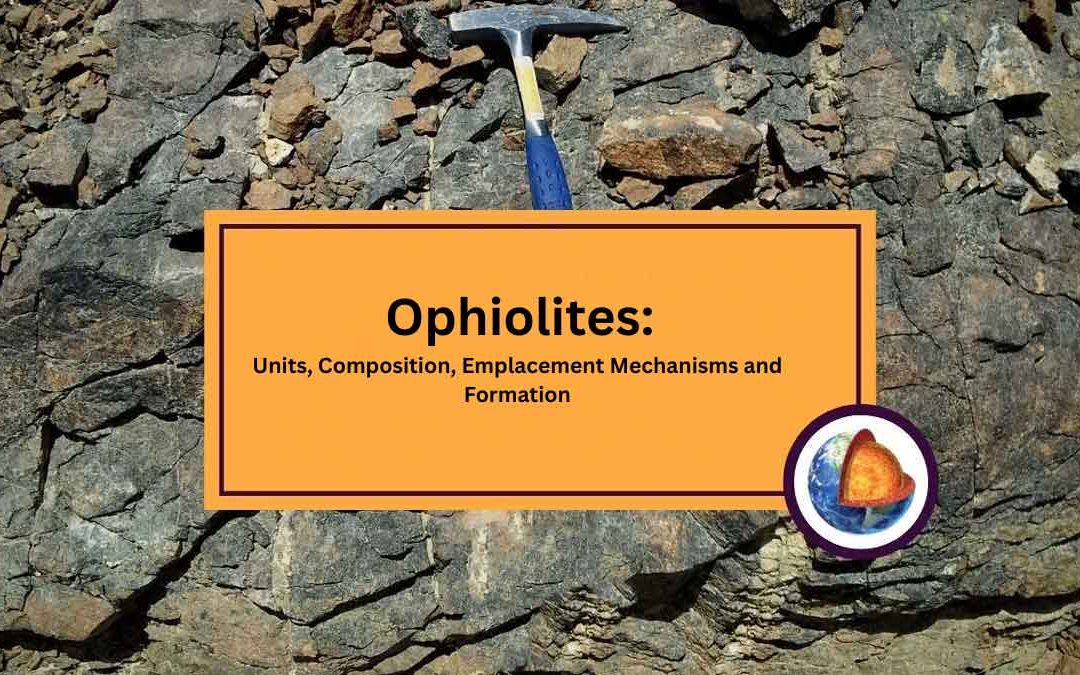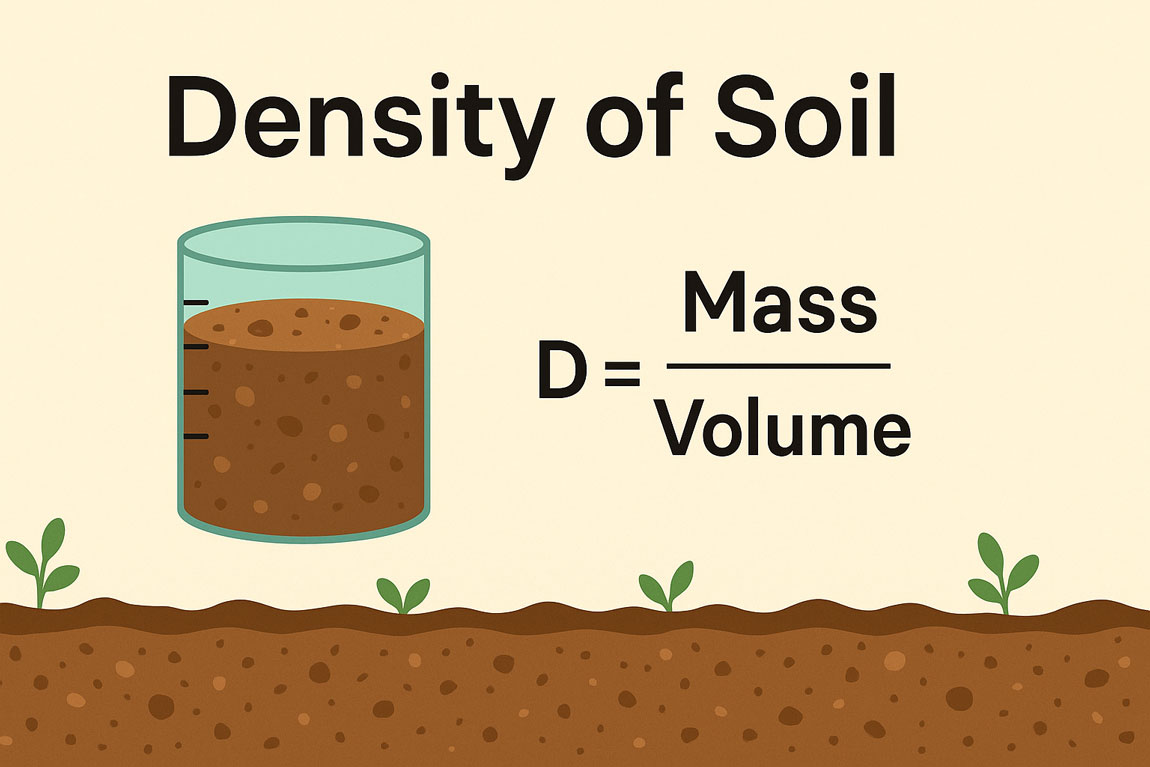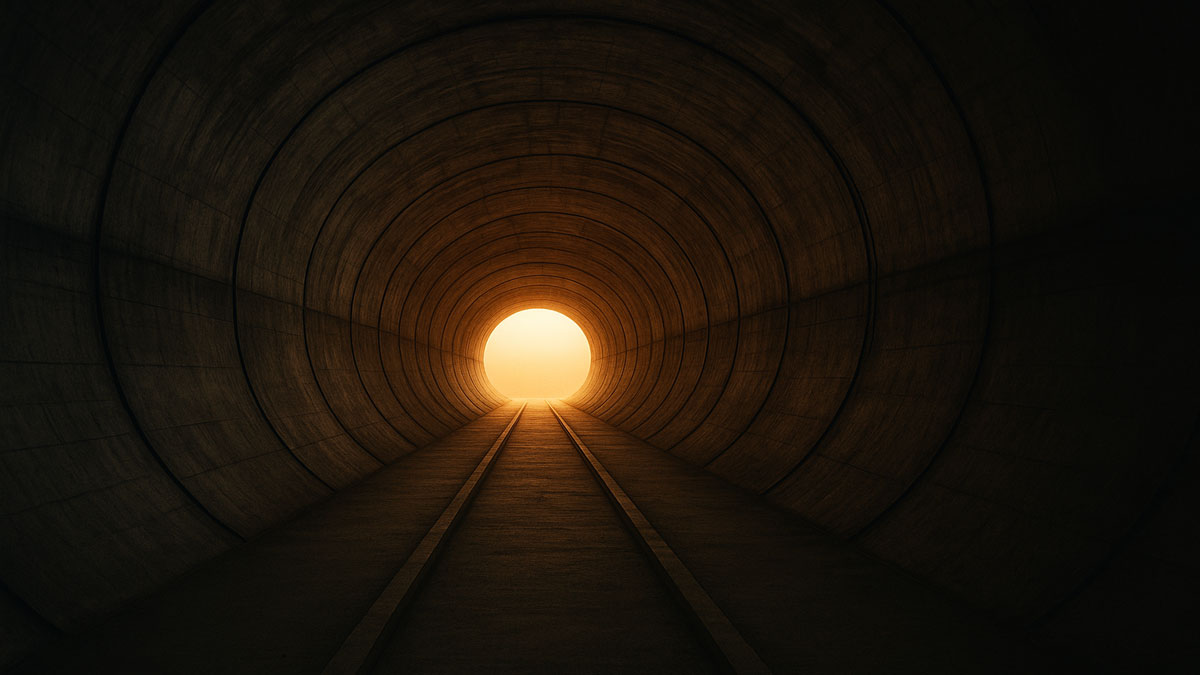Ophiolites:
Ophiolites are tectonically emplaced successions of mafic and ultramafic rocks that are considered to represent fragments of oceanic or back-arc basin crust (Coleman, 1977; Moores, 1982).
Units of Ophiolites:
An ideal ophiolite includes from bottom to top the following units:
1. Ultramafic tectonite (generally harzburgites)
2. Layered cumulate gabbros and ultramafic rocks
3. Non-cumulate gabbros, diorites and plagiogranites
4. Sheeted diabase dykes
5. Pillowed basalts.

Structure and Composition of Ophiolites:
- Overlying this succession in many ophiolites are abyssal or/and pelagic sediments or arc-related volcaniclastic sediments.
- Due to faulting or other causes, the idealized ophiolite succession is rarely found in the geologic record. Instead, one or more of the ophiolite units are missing or they have been dismembered by faulting and occur as blocks in a tectonic melange.
- Some ophiolites are in fault contact with underlying shallow marine cratonic sediments, while others occur as tectonic slivers in accretionary prisms with graywackes and other arc-related rocks. These ophiolites appear to be emplaced along passive and active continental margins, respectively.
- The basal ophiolite melange (Figure 3.2) consists of a chaotic mixture of diverse rocks in a highly-sheared matrix. Clast lithologies include ophiolite derived materials, pelagic and abyssal sediments, graywackes, and various metamorphic and volcanic rocks.
- Matrices are commonly sheared serpentinite. Ophiolite melanges are of tectonic origin formed during ophiolite emplacement.
- Sheared and serpentinized ultramafic rock is an important component in the lower part of most ophiolites.
- These ultramafic tectonites are composed chiefly of harzburgite with pronounced foliation and, generally, compositional banding. Lenses of dunite and chromite occur within the harzburgites.
- Overlying the tectonites are cumulate ultramafic and gabbroic rocks that have formed by fractional crystallization. These rocks have cumulus textures and well-developed compositional banding.
- Some ophiolites contain non-cumulate gabbro, diorite, and plagiogranite in the upper part of the noncumulate zone. Plagiogranites are tonalites composed of quartz and sodic plagioclase with minor mafic silicates.
- They typically have granophyric intergrowths and may be intrusive into layered gabbros (Coleman, 1977).
- Above the non-cumulate unit in an idealized ophiolite is a sheeted dyke complex (Figure 3.2). Dikes may cross-cut or be gradational with the non-cumulate rocks. Although dominantly diabases, dykes range from diorite to pyroxenite in composition, and dyke thickness is variable, commonly from 1-3 m.
- One-way chilled margins are common in sheeted dykes, a feature generally interpreted to reflect vertical intrusion in an oceanic axial rift zone, where one dyke is intruded in the centre of another as the lithosphere spreads.
- The transition from sheeted dykes into pillow basalts generally occurs over an interval of 50-100 m where screens of basalt between dykes become more abundant.
- The uppermost unit of ophiolites is ocean-ridge basalt occurring as pillowed flows or hyaloclastic breccias. Thickness of this unit varies from a few metres to 2 km, and pillows form a honeycomb network with individual pillows ranging up to 1 m across. A few dykes cut the pillowed basalt unit.
- Many ophiolites are overlain by sediments reflecting pelagic, abyssal, or arc depositional environments. Pelagic sediments include radiolarian cherts, red fossiliferous limestones, metalliferous sediments, and abyssal sediments.
- Abyssal sediments are chiefly pelites and siltstones which were deposited on abyssal plains and often show evidence of both volcanic and continental provenance.
- Modern abyssal plains are most frequent adjacent to passive continental margins, and hence have significant input of sediment from continental shelves.
- Some ophiolites are overlain by graywackes and volcaniclastic sediments of arc provenance.
Tectonic setting of ophiolites:
- Ophiolites have been described from three oceanic tectonic settings: mid-ocean ridges, back-arc basins and, in some instances, like the Metchosin Complex in British Columbia, immature island arcs (Coleman, 1977; Massey, 1986).
- Incompatible element distributions in most ophiolitic basalts, as for example the Semail ophiolite in Oman and the Troodos Complex in Cyprus, show a subduction geochemical component (relative depletion in Ta and Nb; Figure 3.3) suggesting that they are fragments of back-arc oceanic crust.
- Relatively few ophiolites have basalts showing NMORB (Normal Mid-Oceanic Ridge Basalt) element distributions.
Emplacement of ophiolites:
Ophiolites are emplaced in arcs or collisional orogens by three major mechanisms (Figure 3.4) (Dewey and Kidd, 1977; Cawood and Suhr, 1992):
- Obduction or thrusting of oceanic lithosphere onto a passive continental margin during a continental collision
- Splitting of the upper part of a descending slab and obduction of a thrust sheet onto a former arc
- Addition of a slab of oceanic crust to an accretionary prism in an arc system.

Formation of ophiolites:

- Although details continue to be controversial, the overall mechanism by which a complete ophiolite succession forms is reasonably well understood.
- As pressure decreases in rising asthenosphere beneath ocean ridges, garnet lherzolite partially melts to produce basaltic magma (Figure 3.6). These magmas collect in shallow chambers (3-6 km deep) and undergo fractional crystallization.
- Layered ultramafic and gabbroic rocks accumulate in the magma chamber forming the cumulate section of ophiolites.
- The tectonized harzburgites represent residue left after melting, which is highly deformed and sheared due to lateral advective motion of the asthenosphere, and/or to deformation during emplacement.
- Dykes are ejected from the magma chamber forming the sheeted dyke complex and many are erupted forming pillow lavas in the axial rift.
- Fractional crystallization in the magma chamber also gives rise locally to diorites and plagiogranites, which are intruded at the top of the layered cumulate series.






